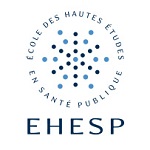Collecting perspectives on project prioritisation process in the EU co-funded multinational partnership for the assessment of risks from chemicals (PARC) through focus group discussion
Abstract
Introduction: The European Partnership for the Assessment of Risks from Chemicals (PARC) is a 7-year multinational partnership aimed at consolidating and strengthening European Union’s (EU) research and innovation capacity for chemical risk assessment (RA) to protect human health and the environment. It consists of nine work packages (WP) involving more than 200 participating organisations from 29 countries. PARC is currently mapping the most relevant needs in the field of European chemical RA to steer PARC’s future activities in the coming years. The present study aims to gather the perspectives of WP/Task/Project Leaders of PARC to understand their experience during the first prioritisation round of PARC activities and to identify potential points of improvement for future rounds.
Methods: Three online 90-min focus group discussion (FGD) sessions were conducted between the 3rd and 9th of May 2023. Each session was attended by 4-5 participants with at least one representative from each PARC WPs 4, 5 and 6 ( n = 13). The sessions were recorded and transcribed, then analysed in NVivo 12 software using thematic analysis.
Results: Some important aspects for the prioritisation of activities that were mentioned include: (1) having a transparent prioritisation process even though each WP might need different prioritisation criteria, (2) balancing the fulfilment of short-term regulatory needs and anticipating long-term needs in chemical RA, (3) maintaining alignment and synergy between the WPs and with other relevant EU initiatives to avoid duplication and to ensure continuity of work and (4) making sure that PARC can effectively respond to requests from different PARC stakeholders.
Conclusions: The next round of PARC research activity steering process will provide an opportunity to implement the various improvements identified. PARC should utilise the advantage of having stakeholders from different backgrounds (e.g., risk assessors, policymakers, regulatory bodies, academia, etc.) within its consortium and its advising bodies to prioritise projects and activities that will support its overall objectives. These recommendations could also be of interest outside PARC in the context of prioritising research and innovation needs related to chemical RA.
| Origin | Publisher files allowed on an open archive |
|---|---|
| Licence |


